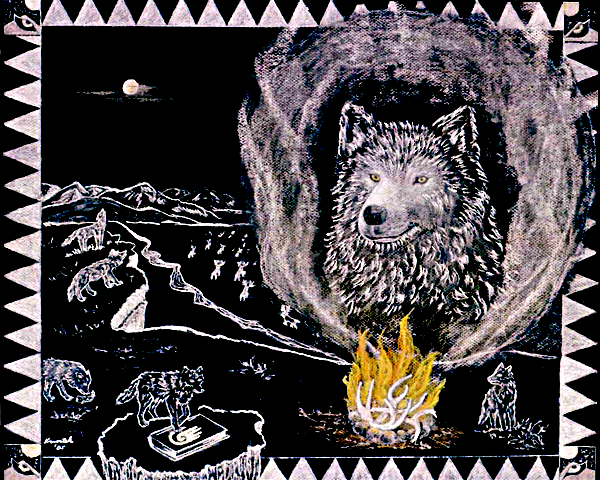Spirit of the Wolf
This piece grew out of many sketches done while observing a semi-captive pack located in the Haliburton Forest and Wildlife Reserve in Ontario, Canada
Haliburton constructed an interpretive center on the reserve to continue wolf education for visitors, where it was possible to observe the pack from a one way window. Patience was rewarded because leadership styles and relationships among the pack could be easily observed whenever they chanced by.
Wolves are highly intelligent animals and develop close relationships within their packs. The alpha male and female, mate for life, and, generally, are
the only ones in the pack allowed to produce cubs. The entire pack supports the feeding and raising of the cubs. How many cubs are raised is determined by the amount of food available and the number of wolves in the pack that need to eat regularly.
Wolves prey mainly on large-hoofed animals such
as deer, elk, moose, caribou, bison and bighorn
sheep. They also eat small animals like the snow-
shoe hare, beaver, rabbit and rodents.They are a key link not only in the food chain,but also in every ecosystem that they inhabit.
Before the first European settlers arrived, there
were an estimated 400,000 gray and red wolves
in North America. Today, wolves are found in only
5% of their original range south of Canada.
Wolves were reintroduced into Yellowstone National
Park in l995 and l996. Unfortunately they are once again in danger of being overhunted. The question should not be "how to get rid of wolves" but how to get along with them as we do with coyotes, bears, cougars and other animals in wilderness.
John Muir, Thomas Berry and many others, have
said, "The 'other than human' are not commodities.
They are the keys to life as we know it on this planet."
Double click here to add text.
Double click here to add text.
Double click here to add text.
"Spirit of the Wolf"' shared first place in a juried exhibit sponsored by the Anti-Cruelty Society, Chicago, IL.

